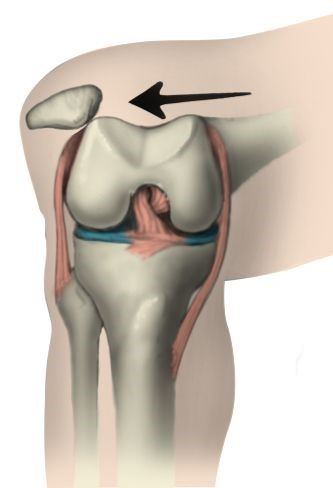During the NFL Thursday night football game between the Kansas City Chiefs and the Denver Broncos, Patrick Mahomes sustained a patella or knee cap dislocation. As he was going to the ground, he was hit forcing his knee to the ground causing the patella to slip out of the groove on the thigh bone or femur. As the patella is forced out the patellofemoral joint, the ligament that stabilizes the patella is damaged. The primary ligament that stabilizes the patellofemoral joint is called the medial patellofemoral ligament or the MPFL.
Most first time patella dislocations are the result of an acute traumatic injury such as a direct blow for example a helmet to knee collision or knee to the ground. The patella can also dislocate after an awkward twisting movement to the knee with a misstep while walking.
The immediate concern is getting the patella back into the groove and protect the patella from dislocating again. The medical staff at the time of Patrick Mahomes' injury were able to reduce the patellofemoral joint (put the patella back in the joint) and stabilize the patella allowing Patrick Mahomes to leave the field.

The initial treatment after an acute patellar dislocation that has been reduced is guided towards controlling the pain and swelling while protecting the patella to allow for soft tissue healing, specifically the medial patellofemoral ligament or the MPFL. Most patients may benefit from using crutches or knee immobilizer to keep the knee from movement or abnormal stress that could cause a subsequent dislocation. Once the swelling and pain improves, the patient is placed in a functional hinged brace and allowed to begin physical therapy to regain motion and strength.
Physical therapy helps the patient to progress to light activities usually within 2 weeks and to athletic activities as strength and function returns. Once the athlete has regained full motion and strength around the knee, the athlete will begin a return to full participation in his sport incorporating a stepwise process introducing a new level of athletic activity as his knee will allow. There are various braces available to help stabilize the patella during the recovery process that may be required as the athlete returns to his prior level of athletic activity.
Occasionally, a patient may develop persistent instability of the patellofemoral joint that may require surgical stabilization. Surgery, if required, is directed at reconstructing the medial pateeloforal ligament or the MPFL. Full return to athletic activity following a MPFL ligament reconstruction can be at least 6 months.
Patella dislocation is a common sports injury we deal with frequently at Resurgens Orthopaedics. With 24 convenienet locations, we are here to keep you moving and active in all of your endeavors.
